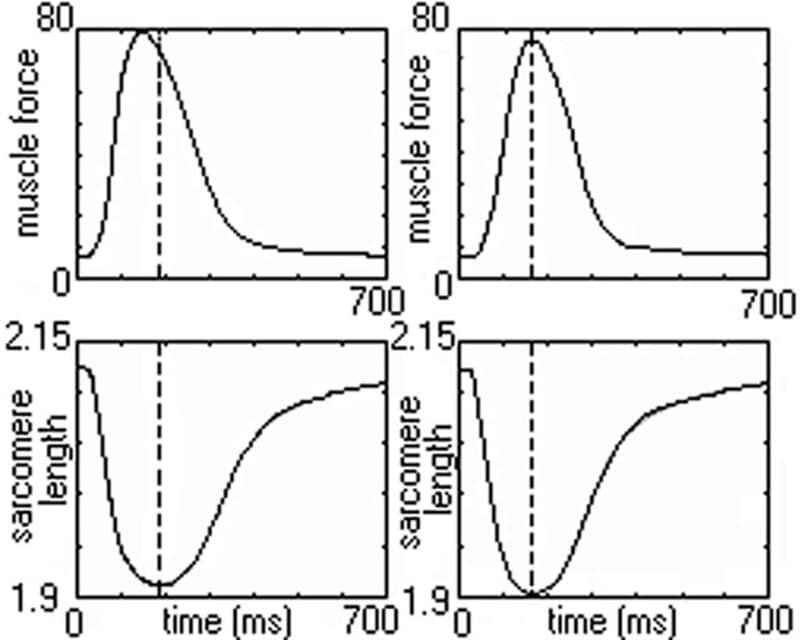To theoretically assess the effects of viscosity on cardiac mechanics, we modified our mathematical model of myocardial mechanical activity [1], which did not comprise viscous elements. Now, two dampers are included: VS1 in parallel to the contractile element, and VS2 in parallel to the series elastic element. Simulation of myocardial contractions (compared to experimental data obtained from 28 rat left ventricular papillary muscles) elucidated the role of viscosity in the following experimentally observed effects: 1. time lag arising between the peak isometric force and the peak sarcomere shortening; 2. sarcomere lengthening toward its initial length in the muscle lasts longer than the muscle force relaxation in isometric twitches; 3. isotonic time-to-peak lengthening velocity is essentially load-independent (except in the medium range of afterloads, where time-to-peak may be delayed when afterload decreases). VS1 proved to be responsible for the effects listed above as 2) and 3), whereas VS2 is responsible for the singular feature of isometric contractions listed as 1) (see Figure). We also clarified in the model how variation of the viscosity affects ino- and lusitropic myocardial function. The following characteristics were considered, first with the basic values of both kinds of viscosity, and then with a 50% reduction in either VS1 or VS2: – force-length and force-velocity of contraction; – force-velocity and force-rate of force fall of relaxation. We conclude that the parallel viscosity VS1 has a negligible effect on inotropic properties and characteristics of relaxation. The serial viscosity VS2 affects neither inotropic nor lusitropic characteristics. The latter seems noteworthy for experiments with real preparations. Indeed, in-series viscosity must be associated with the attached ends of experimental samples, i.e. it is an artificial property in respect of intact myocardium. The model predicts that this experimentally imposed condition does not affect the main myocardial mechanical characteristics obtained in experiments using such preparations.
University of Oxford (2004) J Physiol 561P, PC12
Communications: DnullOES VISCOSITY AFFECT MYOCARDIUM MECHANICAL ACTIVITYnull?
Katsnelson,L B; Nikitina,L V; Chemla,D ; Solovyova,O ; Coirault,C ; Lecarpentier,Y ; Markhasin,V S;
1. Institute of Immunology & Physiology of the RAS, Pervomayskaya 91, Ekaterinburg, Russian Federation. 2. Service de Physiologie, CHU de Bicetre AP-HP-Universite Paris Sud 11, Le Kremlin-Bicetre, France.
View other abstracts by:
Simulation of the effect of viscosity on mismatch between the peak isometric force and sarcomere shortening. Left panels: in-series viscosity is switched on (VS2≠0). Right panels: series viscosity is switched off (VS2=0). Muscle force (top panels) in mN sarcomere length (bottom panels) in micrometers
Where applicable, experiments conform with Society ethical requirements.

